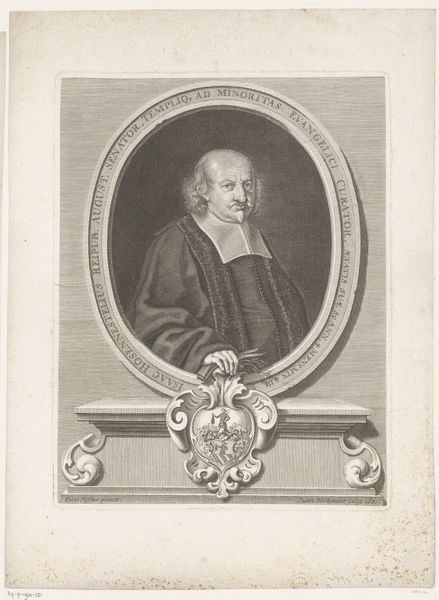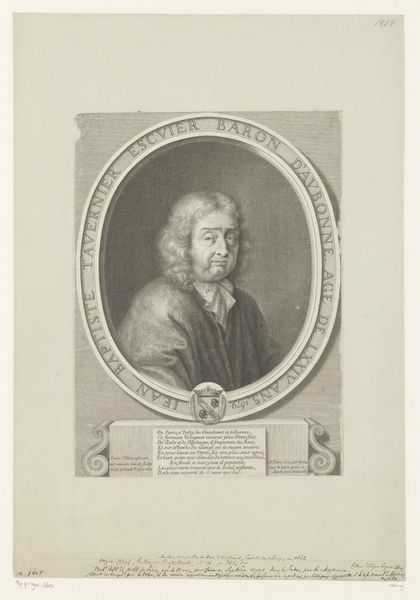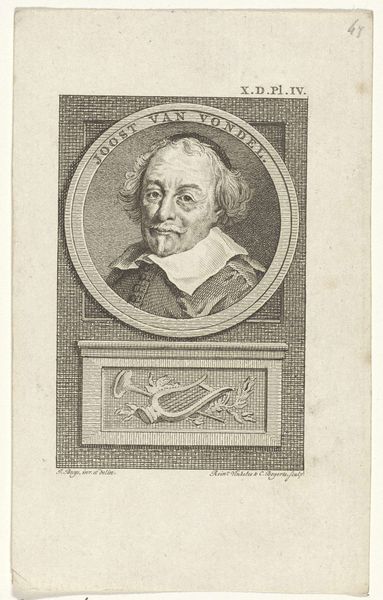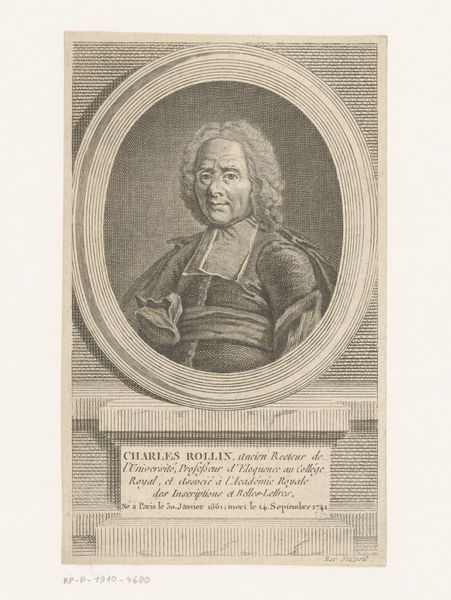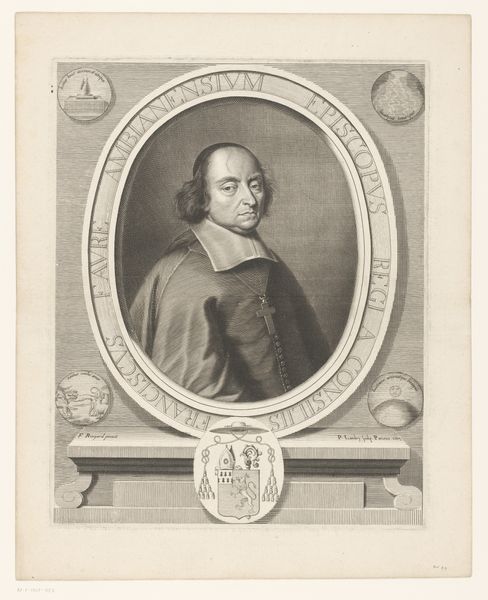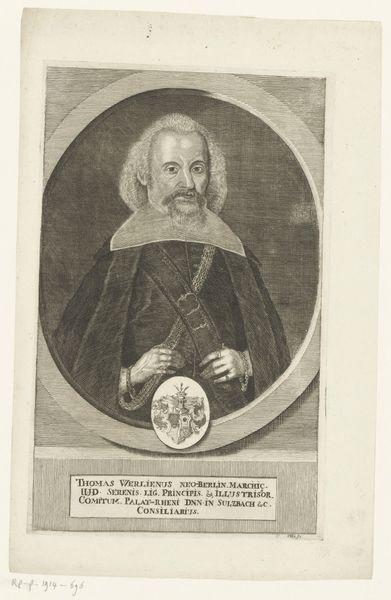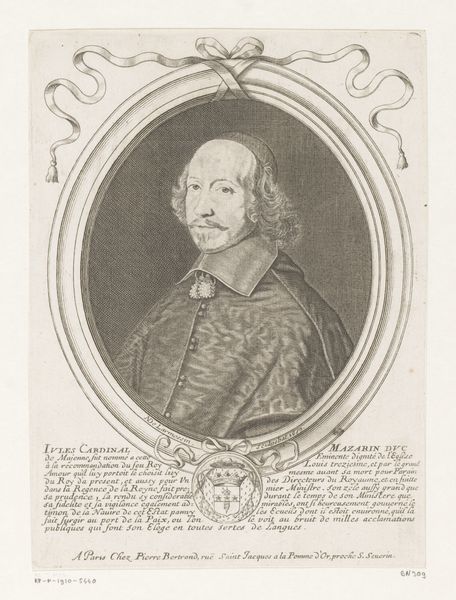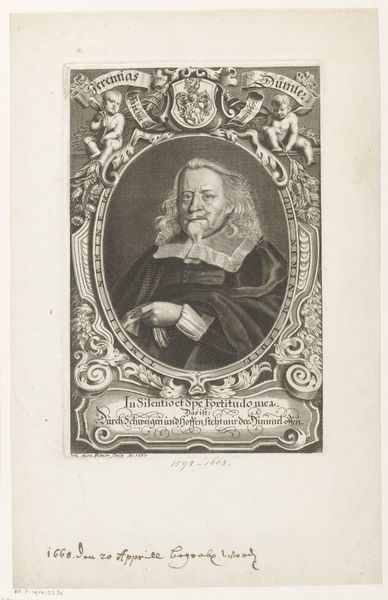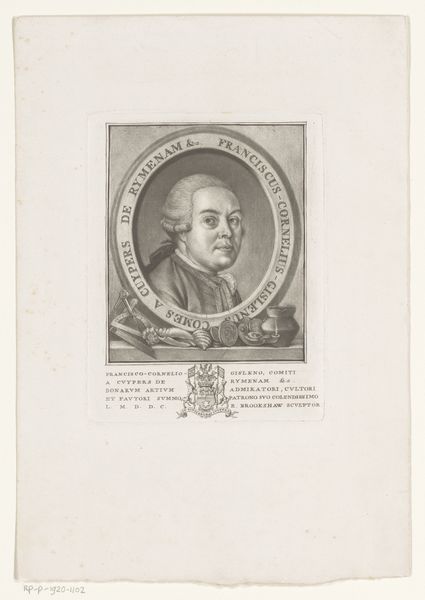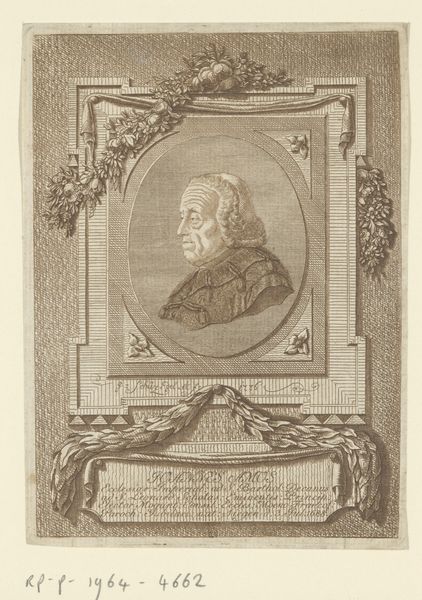
engraving
#
portrait
#
baroque
#
old engraving style
#
historical photography
#
line
#
engraving
Dimensions: height 294 mm, width 200 mm
Copyright: Rijks Museum: Open Domain
Editor: Here we have Pierre Landry's 1672 engraving, "Portret van Antoine Godeau." The stark contrast and the linearity of the piece give it a certain austere quality, almost severe. How do you interpret this work purely from a formal perspective? Curator: The engraving employs a limited tonal range, relying primarily on line to delineate form and texture. Notice the precise, almost scientific rendering of the face, achieved through varying densities of hatching and cross-hatching. Consider the oval frame – its geometry contrasts sharply with the organic quality of the portrait within. Do you perceive a similar tension elsewhere in the composition? Editor: I see that same tension between the clean lines of the architecture beneath the portrait and the more textured lines above it. But what purpose do these elements serve from a purely compositional standpoint? Curator: Functionally, the geometric elements provide a grounding for the portrait, creating a visual hierarchy. The gaze of the subject, directed slightly off-center, invites the viewer to visually complete the composition, activating the surrounding space. We also observe the use of light and shadow to sculpt the features of Antoine Godeau's face, lending a sense of three-dimensionality. Notice how Landry uses subtle gradations in the lines to create this effect. What do you observe in the subject's expression? Editor: I think his somber, knowing gaze definitely commands attention. I appreciate your breakdown of the compositional techniques – I'll definitely pay more attention to the geometry in portraits going forward. Curator: Precisely. By examining the artist’s use of form, line, and composition, we gain a richer understanding of the artwork's inherent visual language and overall impact.
Comments
No comments
Be the first to comment and join the conversation on the ultimate creative platform.
